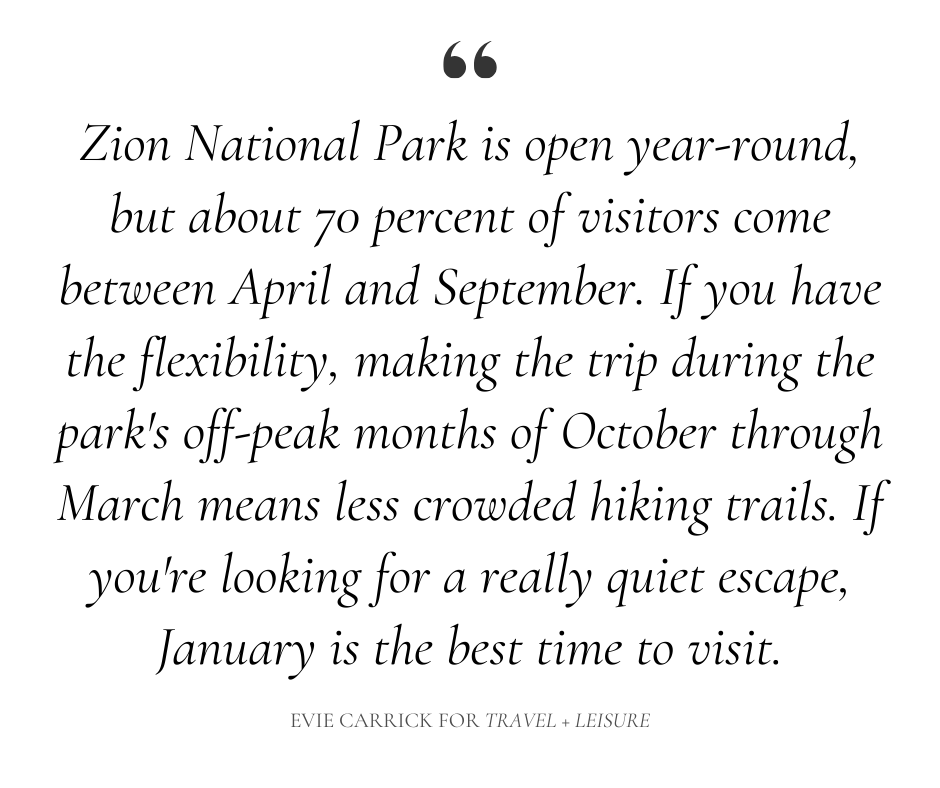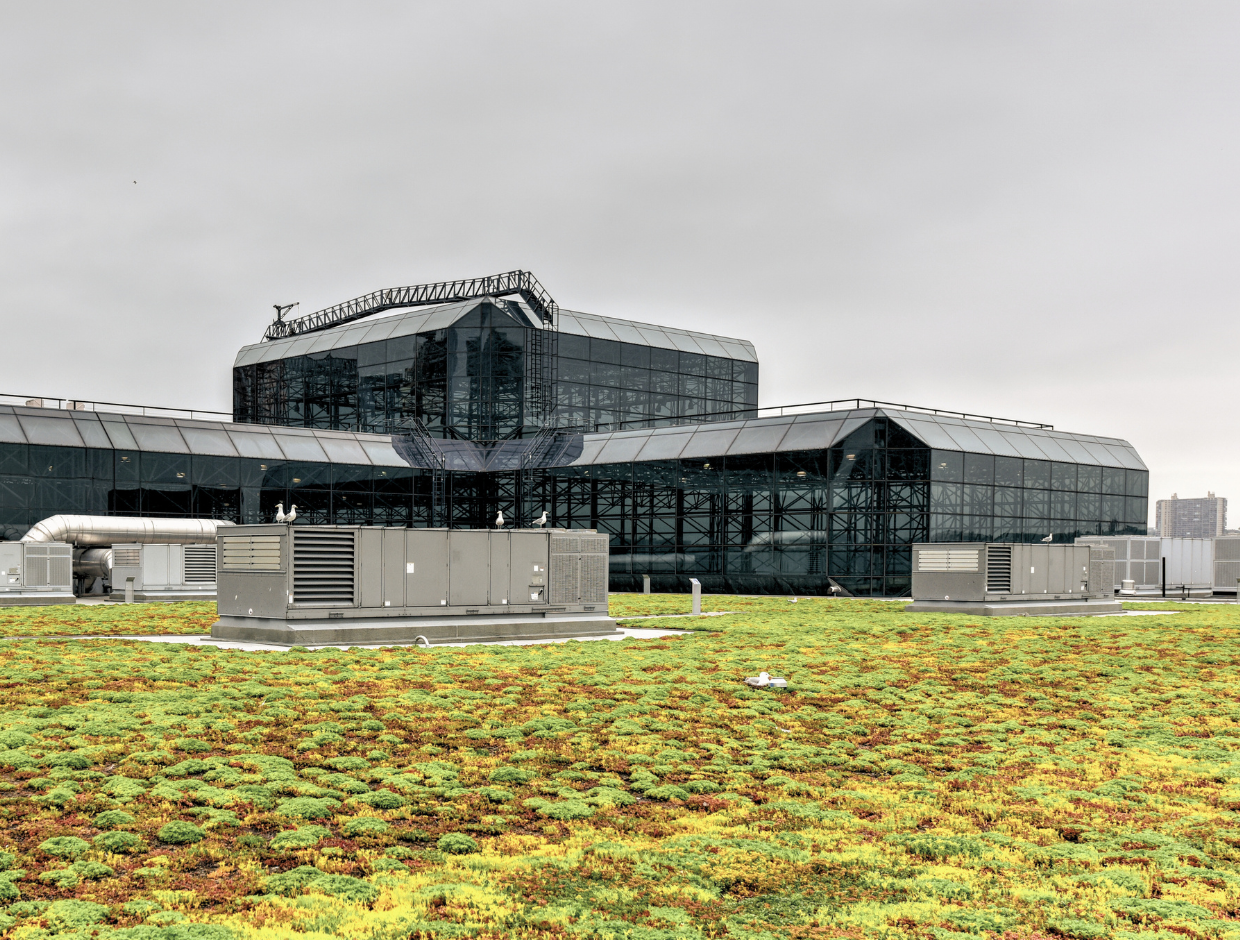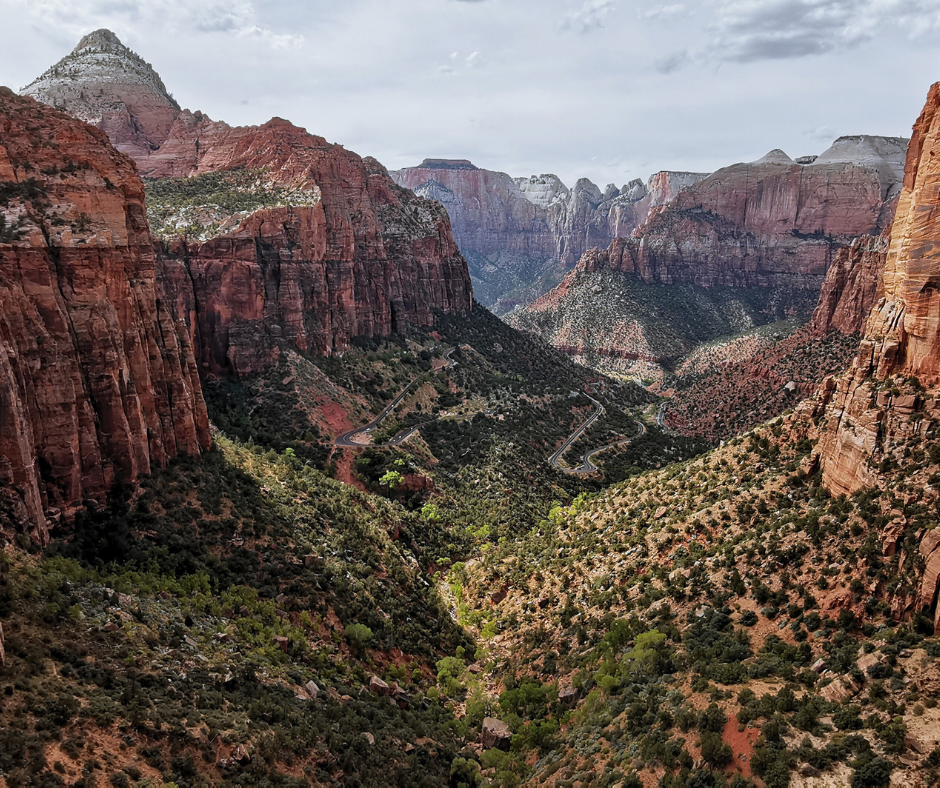

This Is the Best Time to Visit Zion National Park
Summary
Zion National Park offers distinct experiences across different seasons, each with its own unique advantages and considerations. Whether you’re hiking through vibrant wildflower trails in the spring, capturing dramatic autumn foliage, enjoying the solitude of winter, engaging in water activities in early summer, or attending lively events, planning ahead is crucial. This includes booking accommodations early, understanding permit requirements for certain activities, and staying updated with real-time park conditions to ensure a safe and enriching visit.
Reflection Questions
- What personal goals do you want to achieve during your visit to Zion National Park, and how can aligning your trip with specific seasons help fulfill these goals?
- Reflect on your previous experiences with nature and outdoor activities. How have these shaped your expectations for your trip to Zion?
- How do you balance your desire for adventure with the practicalities and preparations required for a trip like this, especially in a popular national park?
Journal Prompt
Envision your perfect day at Zion National Park. Write about it from the moment you wake up to when you return to rest. Include details like the sights you see, the trails you explore, and how you feel throughout the day. Reflect on what this day tells you about your desires for adventure, solitude, or connection with nature. How does this vision influence the way you plan your actual trip?
Zion National Park offers an unforgettable adventure perfect for a girls’ getaway or a memorable family trip. Women seeking a break from routine can conquer towering sandstone cliffs, explore hidden canyons carved by time, and forge lasting memories under the vast desert sky. For mothers, Zion provides a chance to bond with their children in nature, fostering a sense of wonder as they navigate emerald pools, spot wildlife, and marvel at the park’s geologic grandeur. Zion caters to all levels of experience, with hikes ranging from family-friendly trails to exhilarating climbs, ensuring an enriching adventure for all. But what’s the best time to visit Zion National Park? Are the summer months superior to the winter season? Should you visit during holiday weekends? It depends on your goals! Read on to learn all you need to know about visiting Zion National Park with peak season crowds and during the chilly winter months. And don’t forget to visit nearby parks after Zion Canyon Road is in your rearview mirror!
All You Need to Know About Zion’s Many Seasons
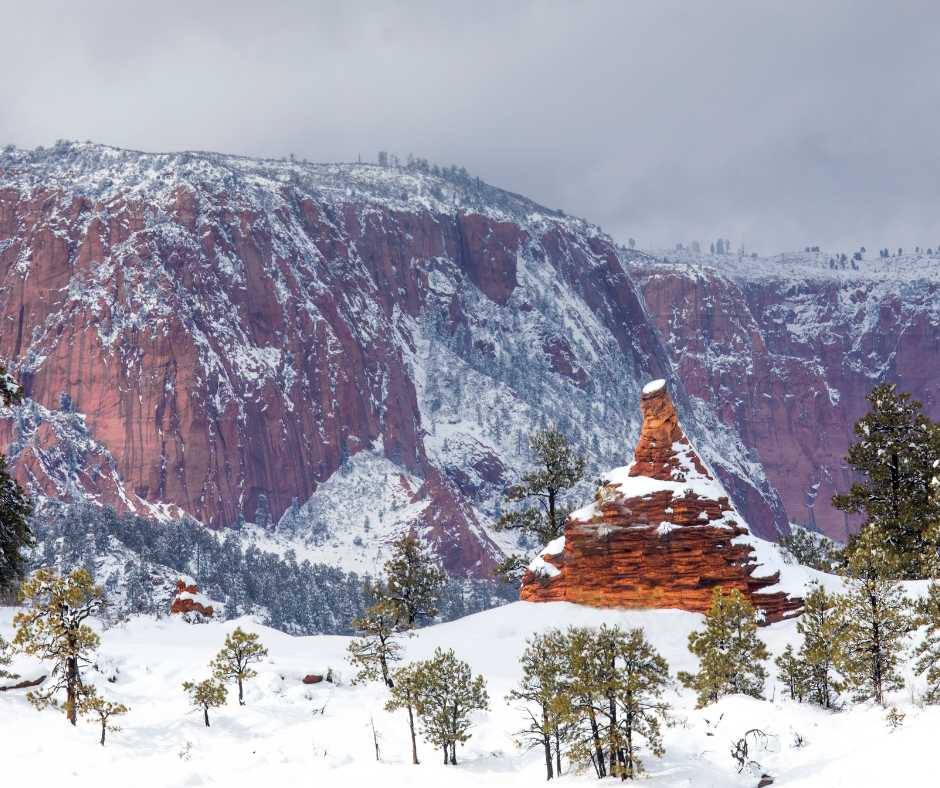

Zion National Park experiences a high desert climate, which brings distinct seasonal changes, influencing both the landscape and the visitor experience. Spring typically arrives with mild temperatures and the chance of rain, turning the park vibrant with wildflowers and new greenery. Summer heats up considerably, with temperatures often exceeding 100°F, making early morning or late evening the best times for outdoor activities.
In contrast, autumn sees a cooling down period, with comfortable temperatures and the leaves of cottonwoods turning gold, providing a spectacular display. Winter in Zion is relatively mild compared to more northern parks, though snow is common on higher elevations, and temperatures can drop below freezing, transforming the park into a quiet, snowy retreat.
General Advice for Visiting Zion
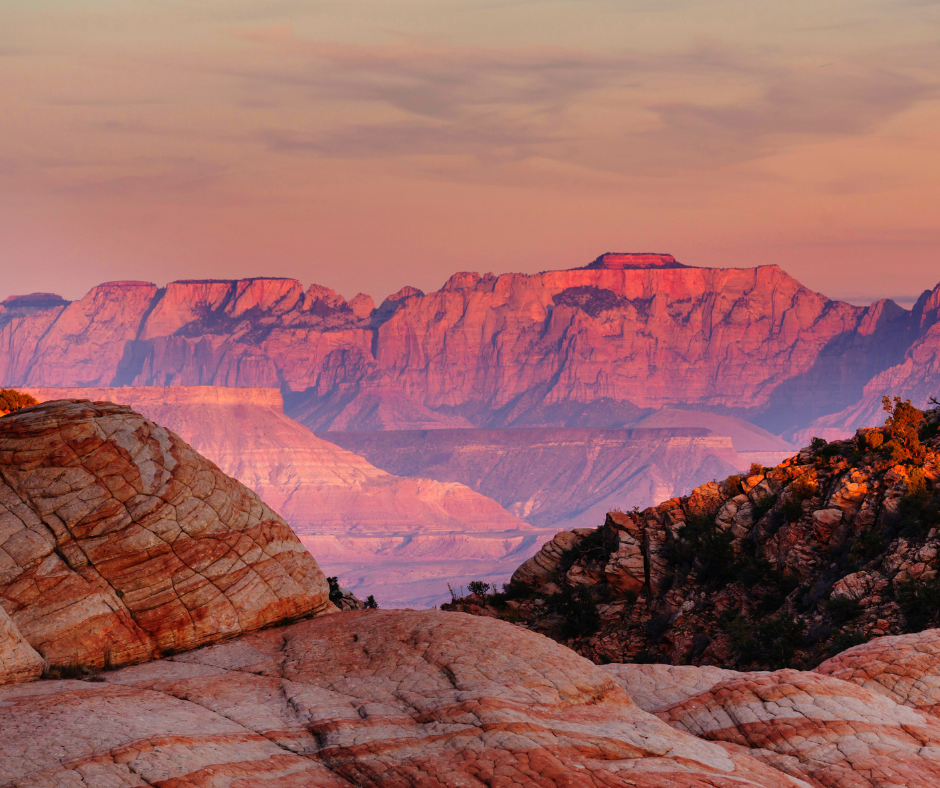

Visiting national parks requires an understanding of how seasonality can affect various aspects of the natural environment and the activities available. In Zion, as in many protected areas, wildlife behavior changes with the seasons. Spring and fall are particularly active times for animal sightings as creatures are either waking from hibernation or preparing for winter. When visiting Zion National Park, Spring Break is an attractive time for wildlife viewing and embarking on the Zion Canyon Scenic Drive. Vegetation cycles also play a crucial role, with different plant species blooming or seeding at various times of the year, contributing to the ever-changing scenery.
Seasonal weather conditions can affect trail accessibility and the types of activities that are safe and enjoyable. For instance, many prefer hiking and canyoneering during cooler months to avoid the summer heat and potential flash floods. Thus, visitors should plan their trips according to what they want to see and do, keeping in mind that the dynamic nature of Zion’s environment can offer unique experiences with each season.
As always, we recommend speaking with experts at the Zion Canyon Visitor Center or referencing the park’s website.
These Are the Best Times Visiting Zion if Hiking is Your Goal
Hiking During Spring


What’s the best time to visit Zion if mind-blowing hiking is your goal? Spring in Zion National Park is a prime time for hiking, as the weather begins to warm up, bringing the landscape back to life. During these months, temperatures are comfortably mild, typically ranging from the 60s to the 80s (Fahrenheit), which is ideal for daytime hiking. If you’ve ever visited national park trails during the spring, you know that the melting snow from higher elevations feeds into the rivers and streams, creating lush, vibrant surroundings and making this season especially appealing for those interested in both nature and photography.
Advantages of Hiking During Spring
One of the most compelling reasons to hike in Zion during the spring is the mild temperatures that make extended treks more comfortable. Additionally, this season witnesses the blooming of wildflowers, which carpet the lower park areas with a variety of colors and fragrances. This natural spectacle provides a stunning backdrop for hikers and is particularly captivating for botanical enthusiasts.


are you a fine artist or photographer?
Considerations for Exploring Hiking Trails During the Spring
While spring offers many advantages, hikers should be cautious of higher water levels, particularly in late spring. The snowmelt can significantly increase river flows, particularly in the Virgin River, affecting the accessibility and safety of riverbed hikes like The Narrows. However, Monsoon season doesn’t start until the late summer so the Zion Canyon shuttle should run throughout the Spring. Still, visitors should check current conditions and flood warnings with the Utah parks’ authorities to ensure trails and the park shuttle are safe and open for exploration.
Hiking Through Fall Colors
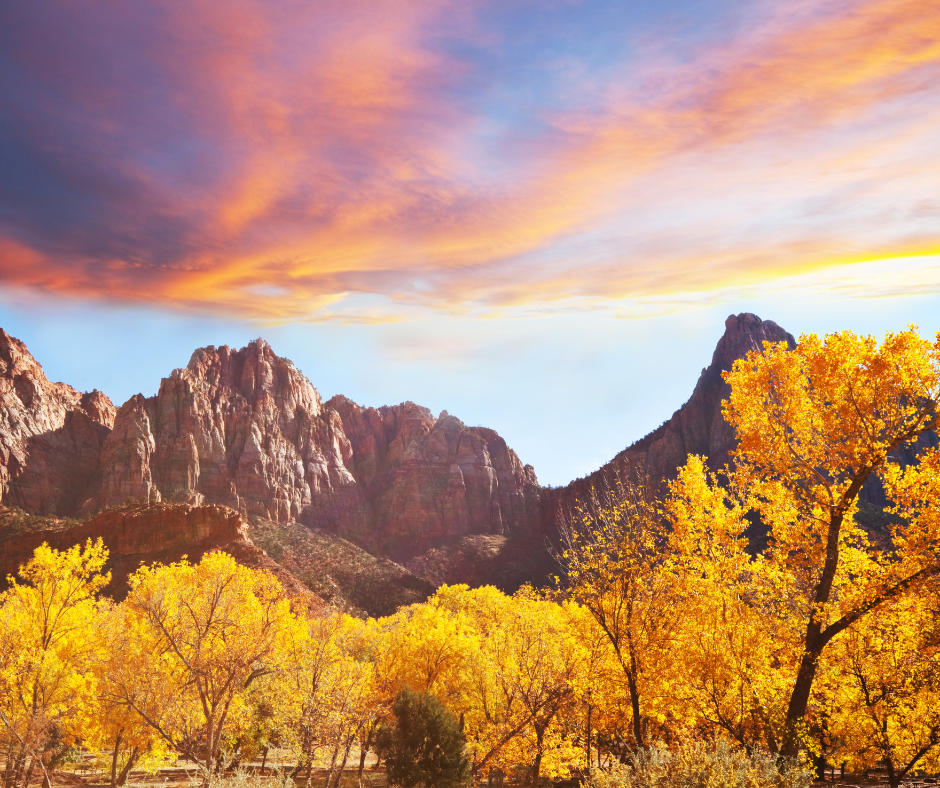

Fall is another excellent time for hiking in Zion National Park. As the heat of summer dissipates, the park is embraced by cooler air and less intense sunlight, making outdoor activities more pleasant. The changing leaves of the cottonwoods and maples offer a dramatic shift in scenery, with vibrant yellows, oranges, and reds dominating the landscape, enhancing the visual experience of hiking.
Plus, there are fewer crowds and Zion Lodge is booked less frequently during this period. Many visitors agree that early November (before winter temperatures set in) is the best time of year to hike Angels Landing.
Advantages of the Fall Season


The cooler temperatures of early fall make strenuous hikes more manageable and enjoyable, reducing the risk of heat exhaustion and allowing for longer periods of activity. Plus, you’ll beat the cold weather of winter. The autumn foliage adds an extraordinary visual element to the park’s already spectacular scenery, making it a favorite season for many seasoned hikers and photographers alike.
Fuel your creative fire & be a part of a supportive community that values how you love to live.
subscribe to our newsletter
Weather Considerations
Hikers planning trips in late fall should be mindful of the shorter daylight hours, which can significantly reduce the time available for hiking safely without the aid of headlamps or flashlights. Additionally, early snowfalls begins around this time, especially at higher elevations, potentially making some trails slippery and more challenging.
While the park entrance should still be open, the Kolob Canyons often close when the snow hits, and inclement weather shuts many other attractions. It’s advisable to check the weather forecast frequently, reference a park map before heading out, and plan accordingly to ensure a safe hiking experience.
This is the Best Time to Visit Zion National Park if Taking Amazing Photos is Your Goal
Early Spring and Late Fall


For photographers aiming to capture the stunning landscapes of Zion National Park, early spring and late fall are ideal times. During these periods, the sun is positioned lower in the sky, creating longer shadows and enhancing the textural details of the park’s towering rock formations. These months also experience fewer visitors, providing a more tranquil setting for photographers to work without interruption.
The colors during these seasons are particularly vibrant, with spring bringing fresh greens and wildflowers, and fall offering a palette of warm reds, oranges, and yellows. Typically, the best months for this kind of dramatic lighting, intense color, and relatively mild weather are March to April and late October to November.
June to August in the Summer Months


Photographing Zion National Park during the summer presents a unique set of challenges and opportunities. The primary challenge is the harsh midday light, which can lead to overexposed skies and underexposed landscapes in photos. This intense sunlight often washes out colors and reduces contrast, making early morning or late evening the best times to capture images.
However, the summer also brings the potential for dramatic monsoon skies in late July and August. These monsoon conditions can create spectacular cloud formations and dynamic lighting conditions, particularly during sunrise and sunset, offering photographers the chance to capture dramatic and moody images with vibrant, stormy skies that contrast sharply against the rugged landscape. However, monsoons might also shut down the town shuttle and other attractions.
These Are the Best Times for Avoiding Crowds
Winter (December to February)
Winter is the ideal season for visitors looking to experience Zion National Park without the crowds. During these months, the number of visitors drops significantly, offering a more solitary and intimate encounter with nature. The park’s iconic cliffs and canyons dusted with snow present a serene and picturesque winter wonderland, rarely seen by the majority of the park’s annual visitors. This tranquility makes it perfect for those seeking peace and solitude. Plus, once snow begins, winter sports abound in Southern Utah during this season.
While winter offers a quiet visit, it also comes with its challenges. Snow and ice can lead to closures of some of the park’s higher elevation roads and trails, limiting access to certain areas. Additionally, the cold temperatures require proper winter gear and preparation for safe exploration. Visitors should check the current conditions and be prepared for icy conditions, closures of popular trails, and potentially slippery roads.
Weekdays and Early Mornings Year-Round


For those looking to avoid crowds year-round, planning visits on weekdays and during early morning hours can significantly reduce encounters with other tourists. Most visitors tend to start their activities mid-morning and on weekends.
By arriving early, you not only beat the crowds but also have the opportunity to enjoy quieter trails and cooler temperatures, which is particularly advantageous in the hotter months. Furthermore, the soft, early light enhances the natural beauty of Zion’s landscapes, making these times ideal for photography and wildlife watching as well.
These Are the Best Times for Water Activities


Late spring and early summer are prime times for water-based activities in Zion National Park, especially for those interested in canyoneering in the iconic Narrows. During these months, the water levels in the Virgin River are typically ideal—high enough to be challenging and immersive, yet not so high as to pose safety risks. Daytime temperatures are moderate, too.
This period follows the peak snowmelt phase when the river swells with runoff, gradually stabilizing as the season progresses. The warmer temperatures make the cold water of the river more tolerable, enhancing the overall experience of wading and swimming through the narrow canyon walls.
Safety Tips and Essential Gear Recommendations
When planning water activities in Zion, particularly canyoneering in the Narrows, it’s crucial to prioritize safety. Always check the daily water level and weather reports to avoid flash flood risks, a common hazard in slot canyons.
Essential gear for a safe and enjoyable experience includes a drysuit or wetsuit for insulation against the cold water, sturdy water shoes to navigate slippery rocks, a walking stick for stability, and a waterproof bag for personal items and electronics. Additionally, beginners should consider hiring a guide or joining a group tour to ensure they are fully prepared for the unique challenges of navigating Zion’s waterways.
Visiting During Special Events and Holidays
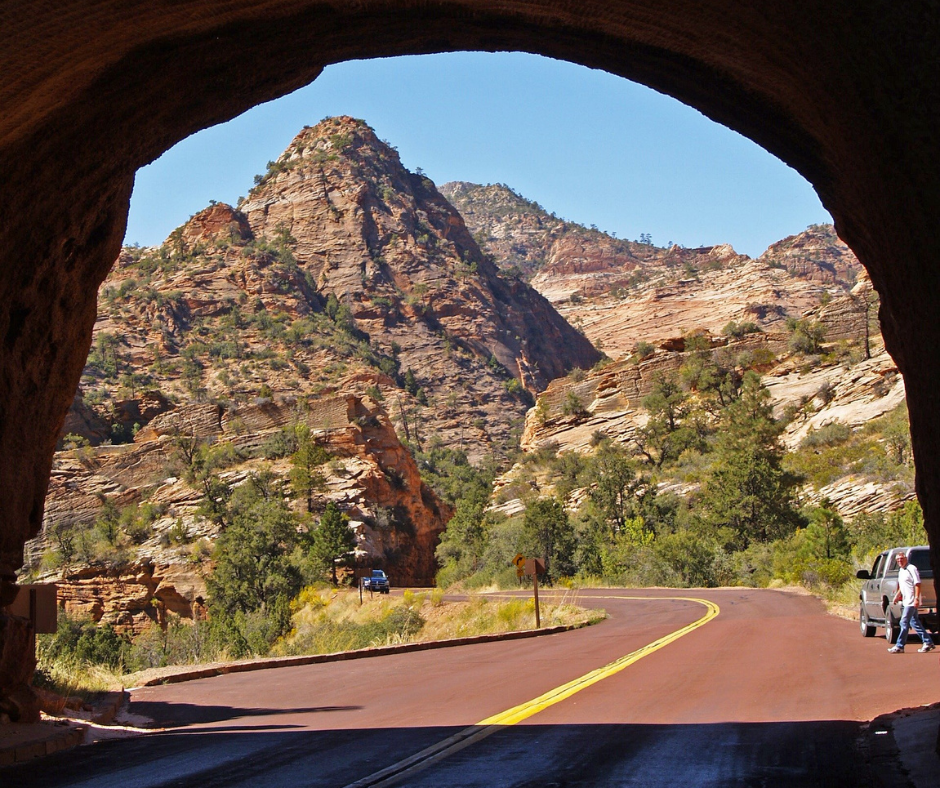

Zion National Park hosts several popular events throughout the year, such as the Zion Canyon Music Festival, which attract significant numbers of visitors. These events can greatly impact crowd levels, making the park much busier than usual.
Accommodations both within and near the park are often booked well in advance during these times, and prices can be higher due to increased demand. Events like these, while adding a vibrant cultural experience to the visit, require extra planning for those who prefer a quieter visit or need convenient lodging options.
Should You Visit During Holidays?


Visiting Zion during major holidays like Memorial Day, Independence Day, and Labor Day offers the advantage of experiencing the park during a lively and festive atmosphere. These holidays typically feature special programs and activities not available during other times, providing unique experiences for visitors.
However, these periods also see a significant increase in park attendance, leading to crowded trails, busy scenic spots, and long waits for shuttle buses. The increased demand can detract from the tranquil nature experience many seek in Zion. Visitors who choose holiday periods for their trip should be prepared for these conditions and consider whether the festive environment compensates for the busier park experience.
Our Top Tips for Planning Your Trip to Zion National Park
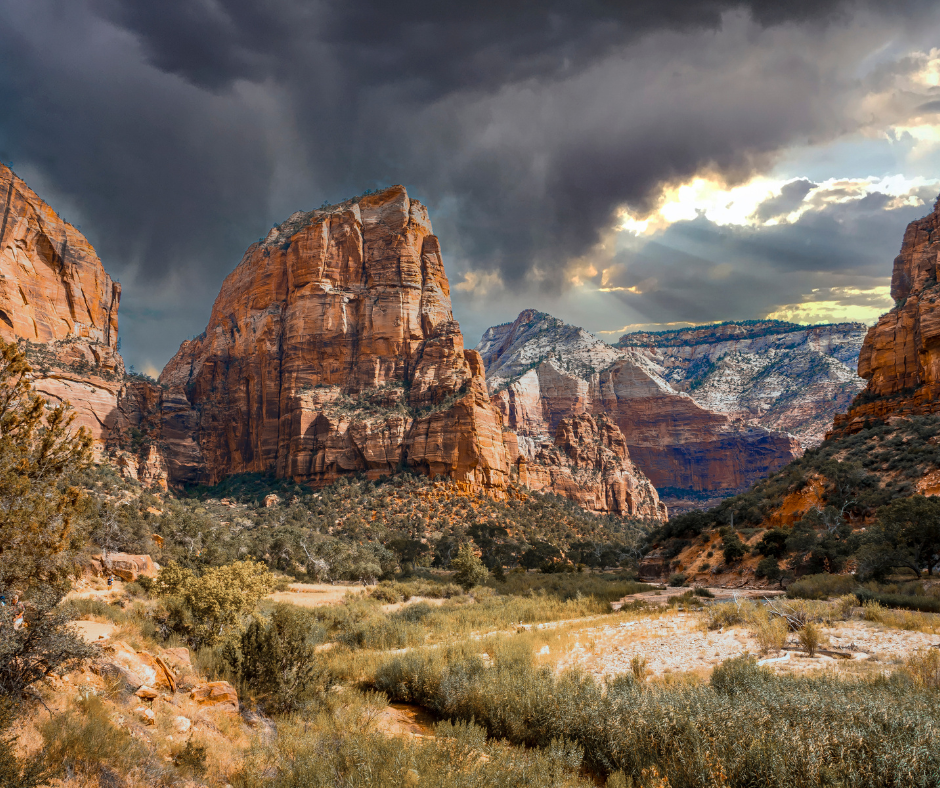

When planning a visit to Zion National Park, securing accommodations should be a top priority, especially during peak visiting seasons or around major holidays and events. Booking well in advance is crucial as options within the park, such as the historic Zion Lodge, can fill up months ahead. Staying inside the park offers easy access to trails and sights, reducing the need for early morning drives.
However, numerous accommodations are available outside the park in nearby towns like Springdale, which offer a wider range of choices from hotels to bed and breakfasts. Consider the type of experience you desire: a more immersive nature experience inside the park or the convenience and amenities available in town.
Bear Permit Requirements in Mind (Especially for Hiking Angels Landing)


Certain hikes and activities in Zion, such as canyoneering in the Narrows or tackling the challenging Subway route, require permits. These permits are issued to manage the number of visitors and minimize environmental impact, ensuring a safer and more enjoyable experience for all.
Permits can be obtained through a lottery system well in advance of your visit or through a limited number of walk-in permits available the day before. It’s important to plan ahead and understand the permit requirements for your intended activities. Failure to obtain necessary permits can result in being turned away from some of Zion’s most iconic adventures.
Consult Resources for Weather and Conditions


Keeping informed of the latest weather forecasts and park conditions is essential for a safe and enjoyable visit to Zion National Park. The National Park Service (NPS) offers resources on their official website, including real-time weather updates, trail closures, and safety warnings.
Additionally, local visitor centers and park rangers are valuable sources of up-to-date information. Smartphone apps and social media platforms can also provide timely alerts and updates, helping visitors make informed decisions about their daily itineraries based on current conditions in the park.
Final Thoughts on Visiting Zion National Park Throughout the Year


Whether you yearn for the camaraderie of a girls’ trip or the shared discovery of a family adventure, Zion National Park promises an unforgettable experience. Leave behind the routines and rediscover the thrill of new trails, the awe-inspiring power of nature, and the precious bond forged between women and their loved ones amidst the towering cliffs and vibrant landscapes of Zion.
(And please don’t forget to fill us in on your trip!)
Design Dash
Join us in designing a life you love.
-
All About Our 7-Day Focus & Flex Challenge
Sign up before August 14th to join us for the Focus & Flex Challenge!
-
Unique Baby Names Inspired by Incredible Women from History
Inspired by historic queens, warriors, artists, and scientists, one of these unusual baby names might be right for your daughter!
-
Finding a New 9 to 5: How to Put Freelance Work on a Resume
From listing relevant skills to explaining your employment gap, here’s how to put freelance jobs on your resume.
-
What is Generation-Skipping, and How Might it Affect Sandwich Generation Parents?
The emotional pain and financial strain of generation skipping can be devastating for Sandwich Generation parents.
-
Four Material Libraries Dedicated to Sustainability, Preservation, and Education
From sustainable building materials (MaterialDriven) to rare pigments (Harvard), each materials library serves a specific purpose.
-
Do You Actually Need a Beauty Fridge for Your Skincare Products? (Yes and No.)
Let’s take a look at what dermatologists and formulators have to say about whether your makeup and skincare belong in a beauty fridge.



